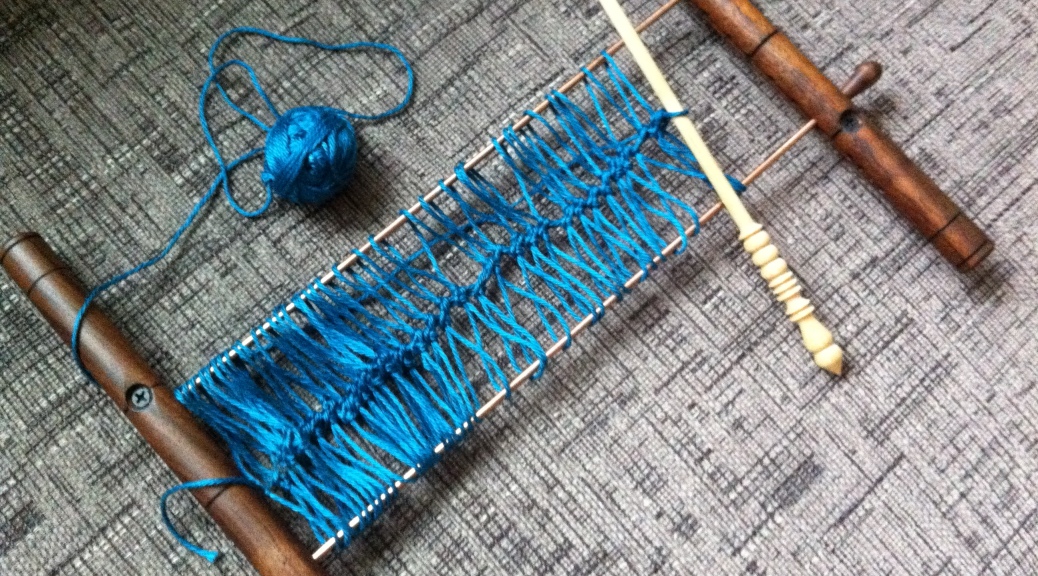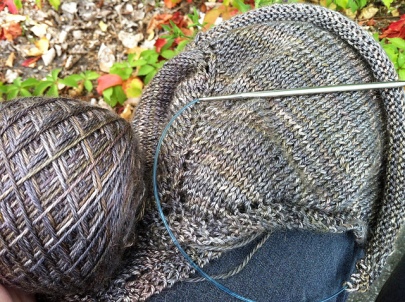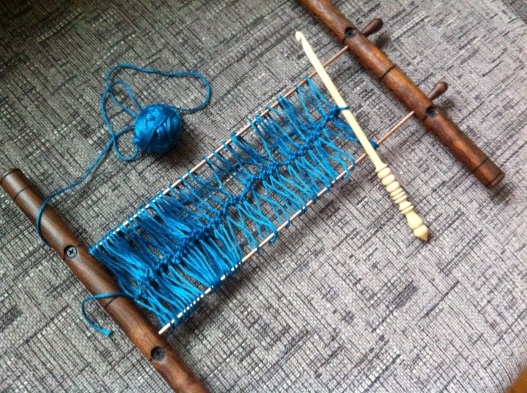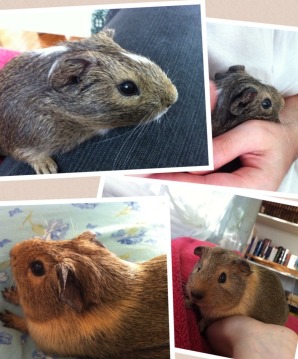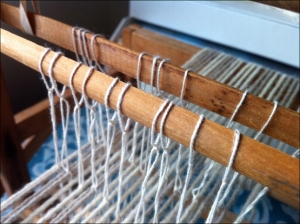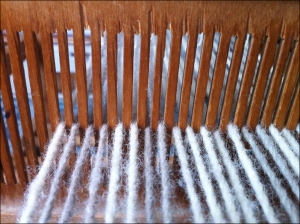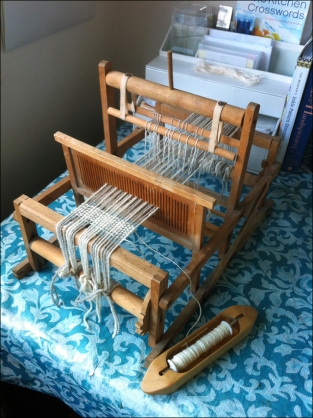Between twisting fringe, washing fleece, learning to crochet, digging through dormant works-in-progress, winding warps, and planning new projects, this past month has been a busy one. A few days ago, I made a happy discovery while idly browsing Etsy*: the manufacturer of my baby loom! It’s a toy loom from Brio, and at least one other adult weaver has succumbed to its charms. I wasn’t able to identify it before because one supporting beam, which would have been marked Brio, is missing. It seems that later versions of this loom used a rigid heddle, but mine is definitely an older model.
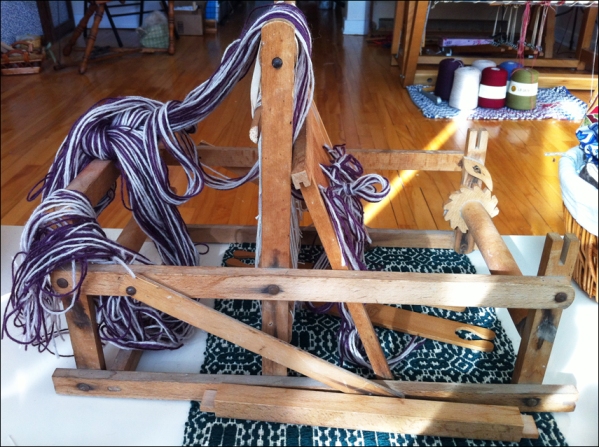
Once I knew its manufacturer, I could find a PDF version of the instruction manual. To my astonishment…
…it folds! When I saw it in the weaving shop, I tried to collapse it for transportation, but when nothing moved, I assumed the loom wasn’t made for it. Actually, it was just that the screws on which the braces rest had rusted, and just needed to be loosened slightly.
Now it can come with me wherever I go. Or, at least, places that my Fanny couldn’t. So, with an upcoming weekend trip in mind, I warped it up again. Using a finer yarn than last time meant tying another 40 string heddles and using two ends per dent, but as a bonus, this made the log cabin threading a piece of cake. The yarn is Lion Brand 1878, which is a new one for me: a review on Amazon compared it to Harrisville Shetland for half the price, and so far it’s very nice, though I did find one knot and one weak spot in the eighty meters I wound for this mini-project. I’m looking forward to seeing how it turns out.
Meanwhile, the laboratory kitchen was taking on a suspiciously sheepy smell, so I could justify spending time happily washing fleece in lieu of dishes. Below, a smidgeon of California Red and Targhee from the Spinning Loft:

The Targhee has a good bit of VM, so I’ll be spending some time picking by hand while plotting to build a box picker. I think I’m going to card the stuff and spin it before dyeing, but I did toss some commercial BFL roving into the dyepot. Having done all the samples for my gamp at once, now I’m focusing on one dyestuff at a time.

Since it’s been a while since my last post, and the holiday season looms, there’s plenty else in the works: a hairpin lace shawl, a crocheted hat, a knitted sweater, and a 600-end Mystery Warp, all to be revealed in due time. But for today, I’ll leave it at that. Hope you’re having a nice November!
—
*A too-frequent pastime. Help!



